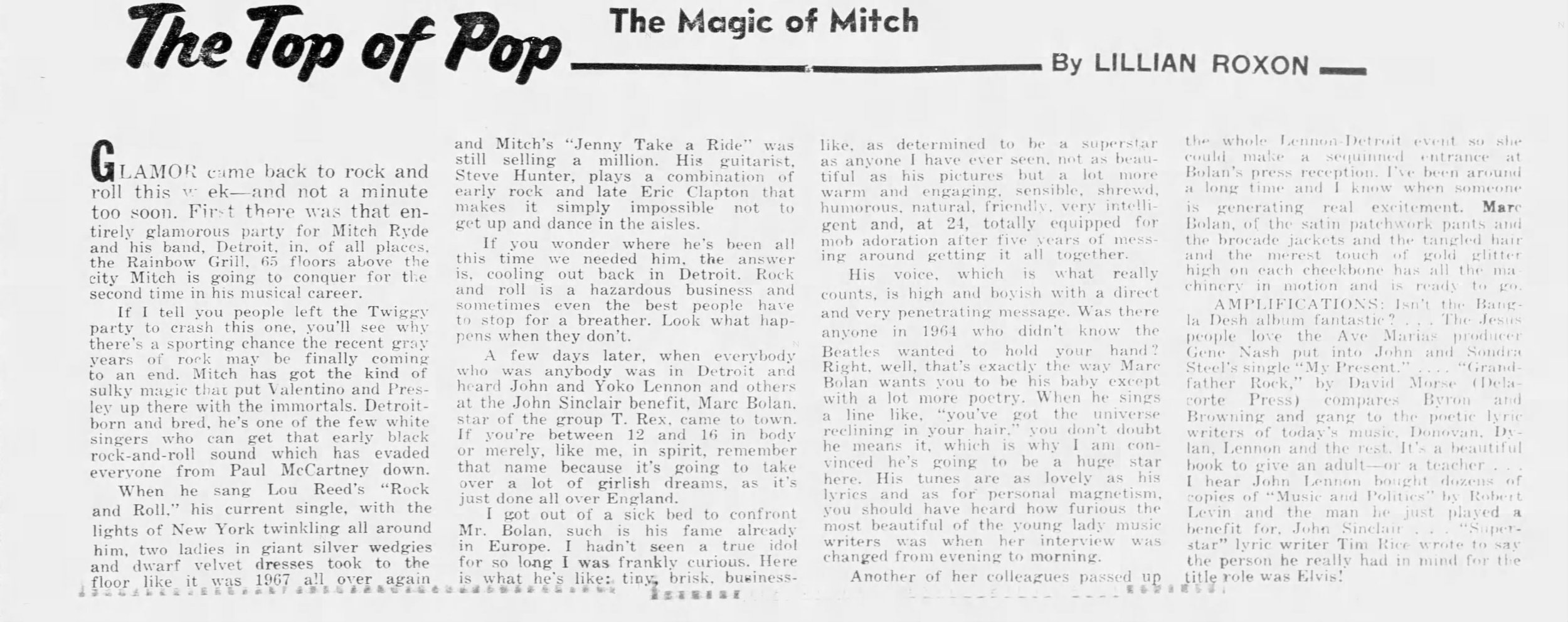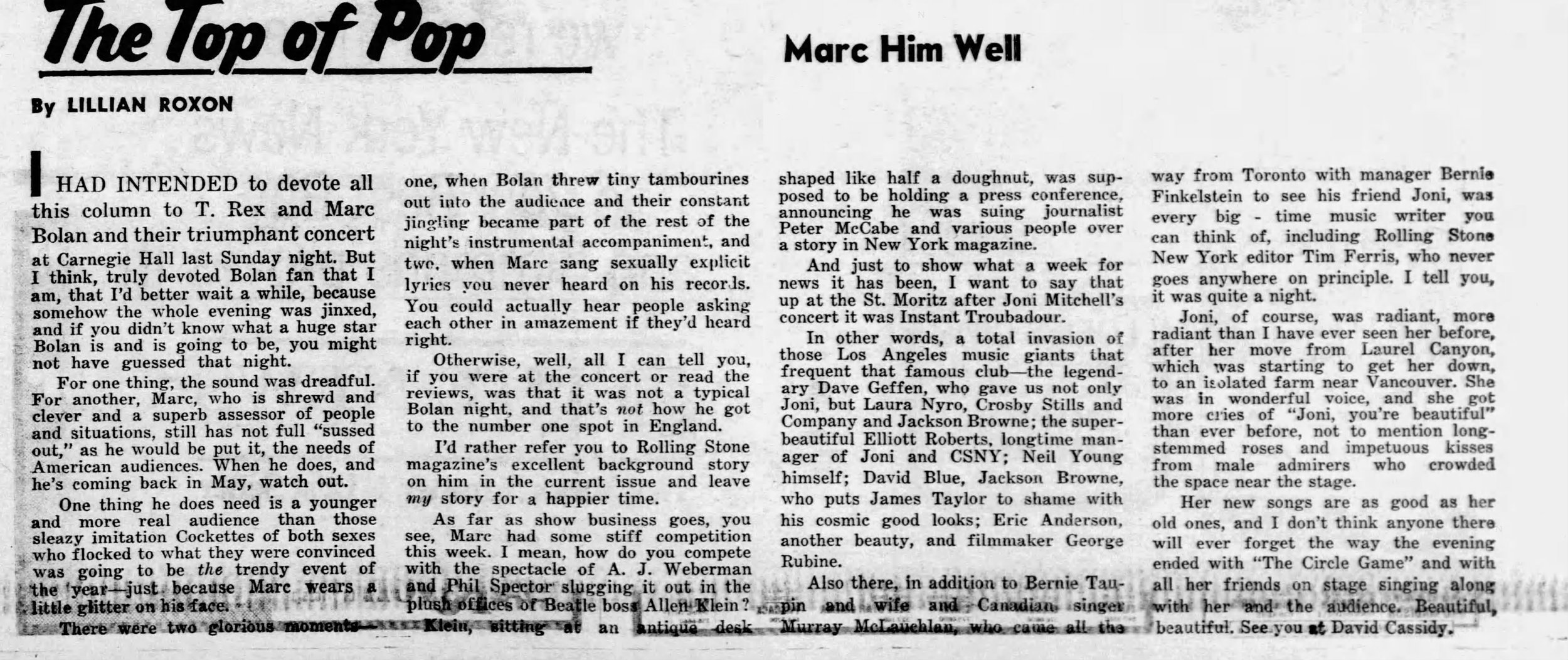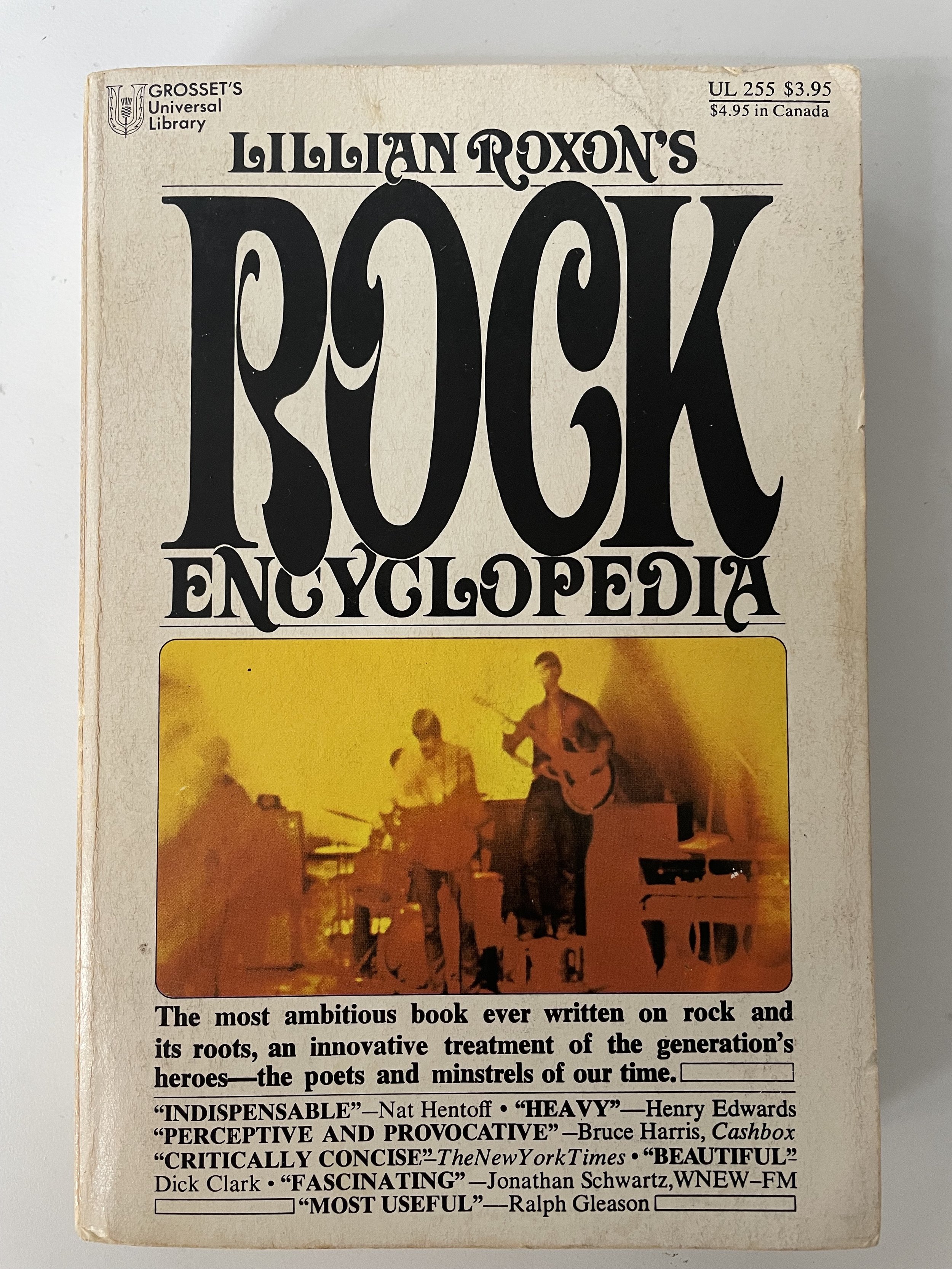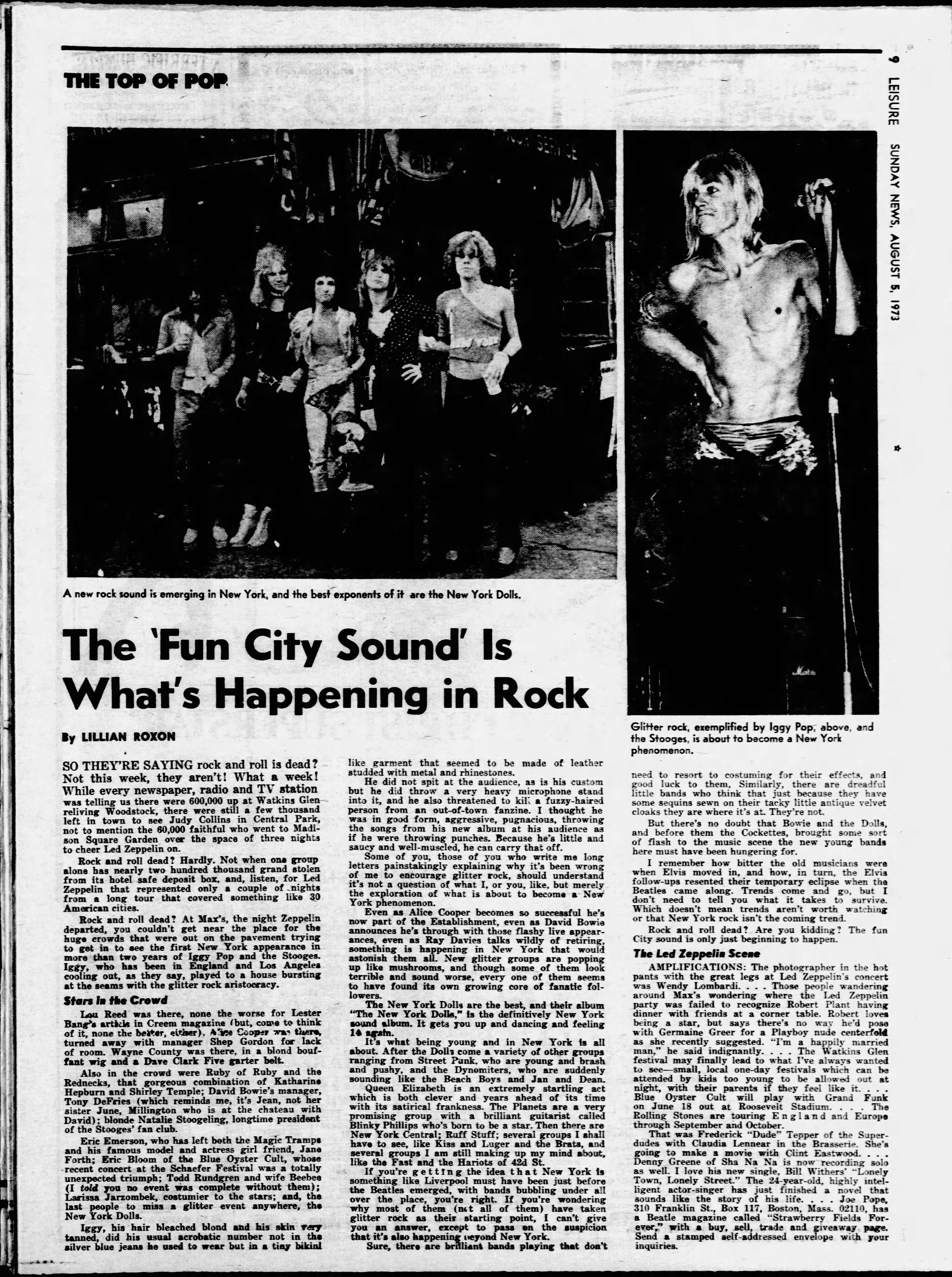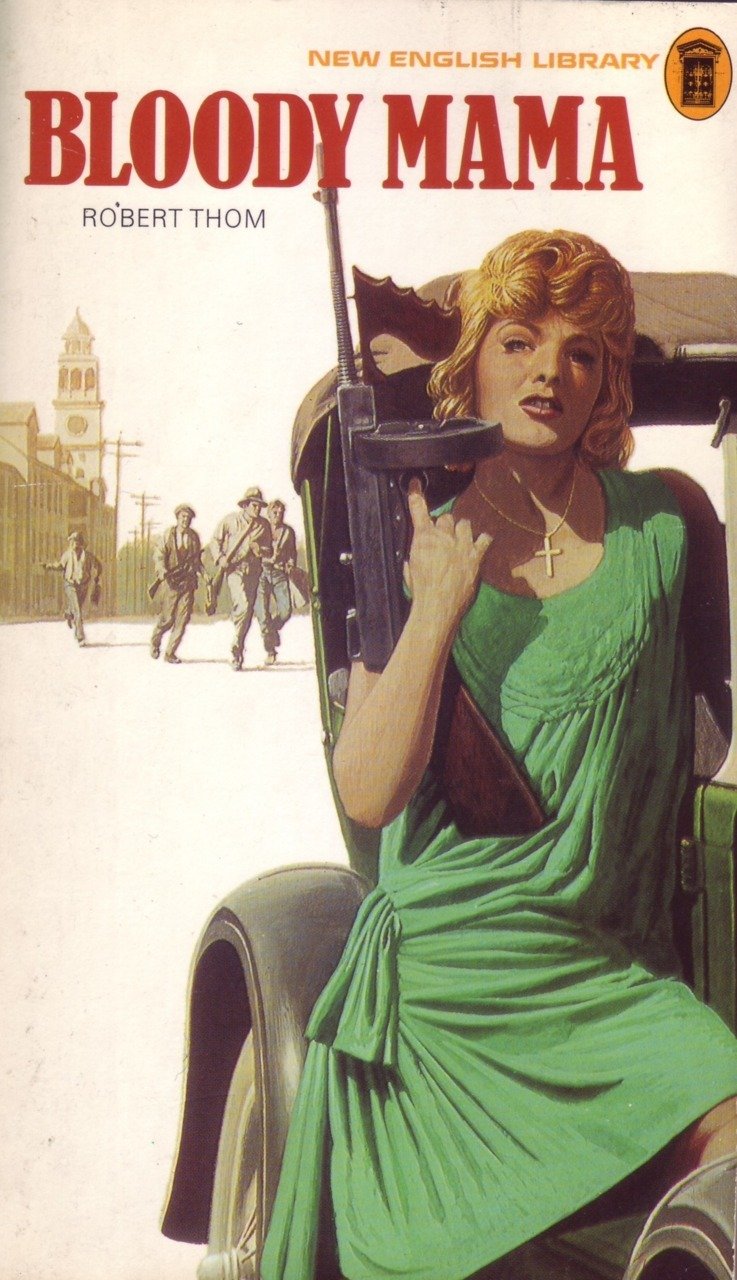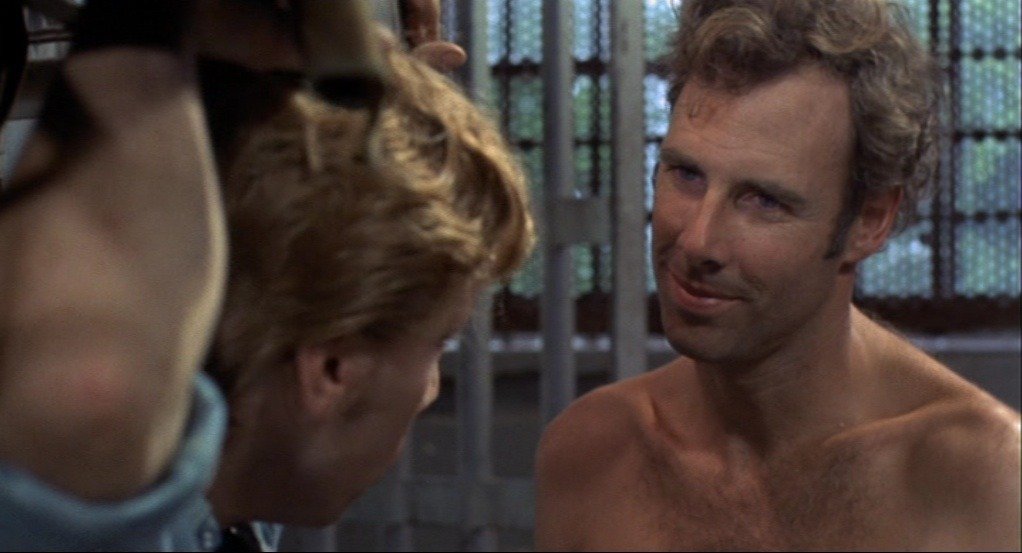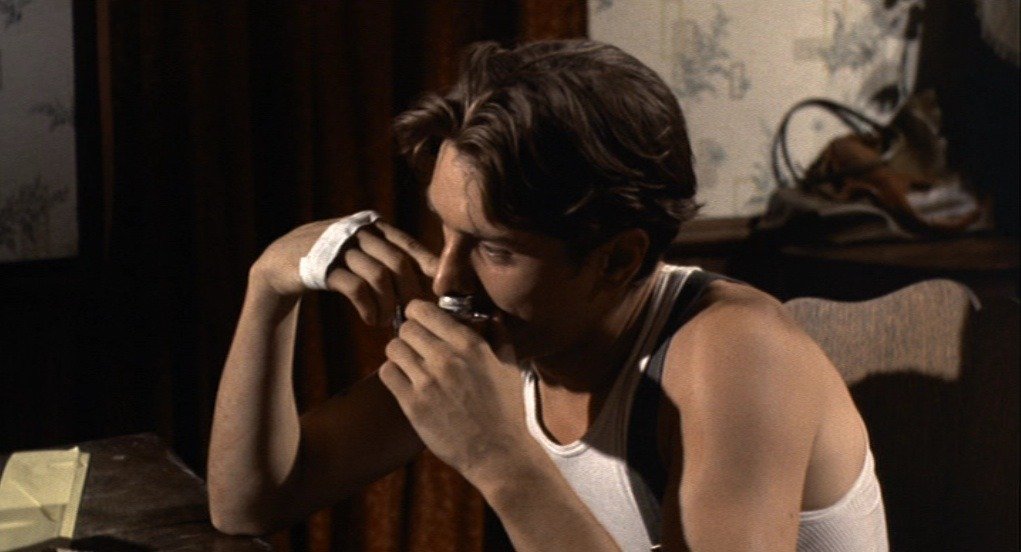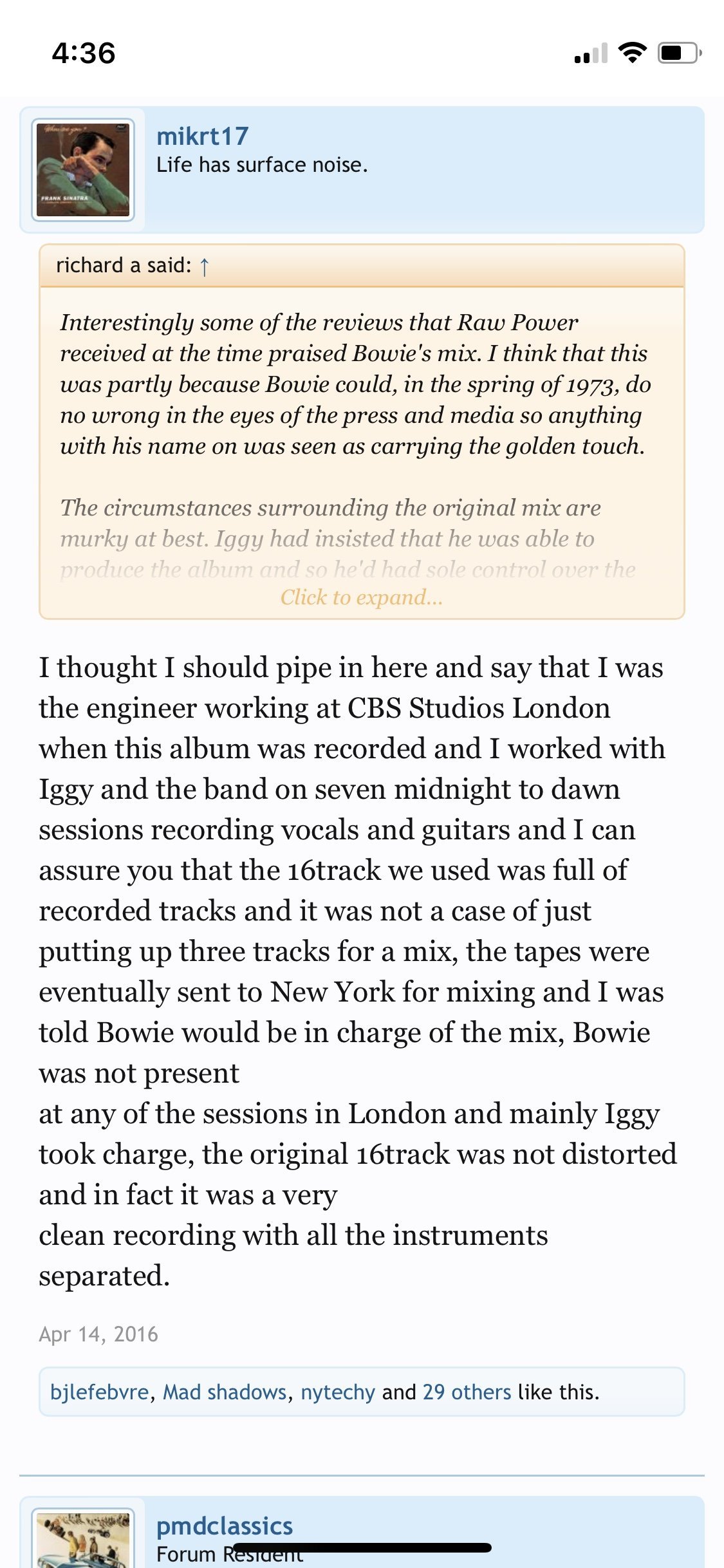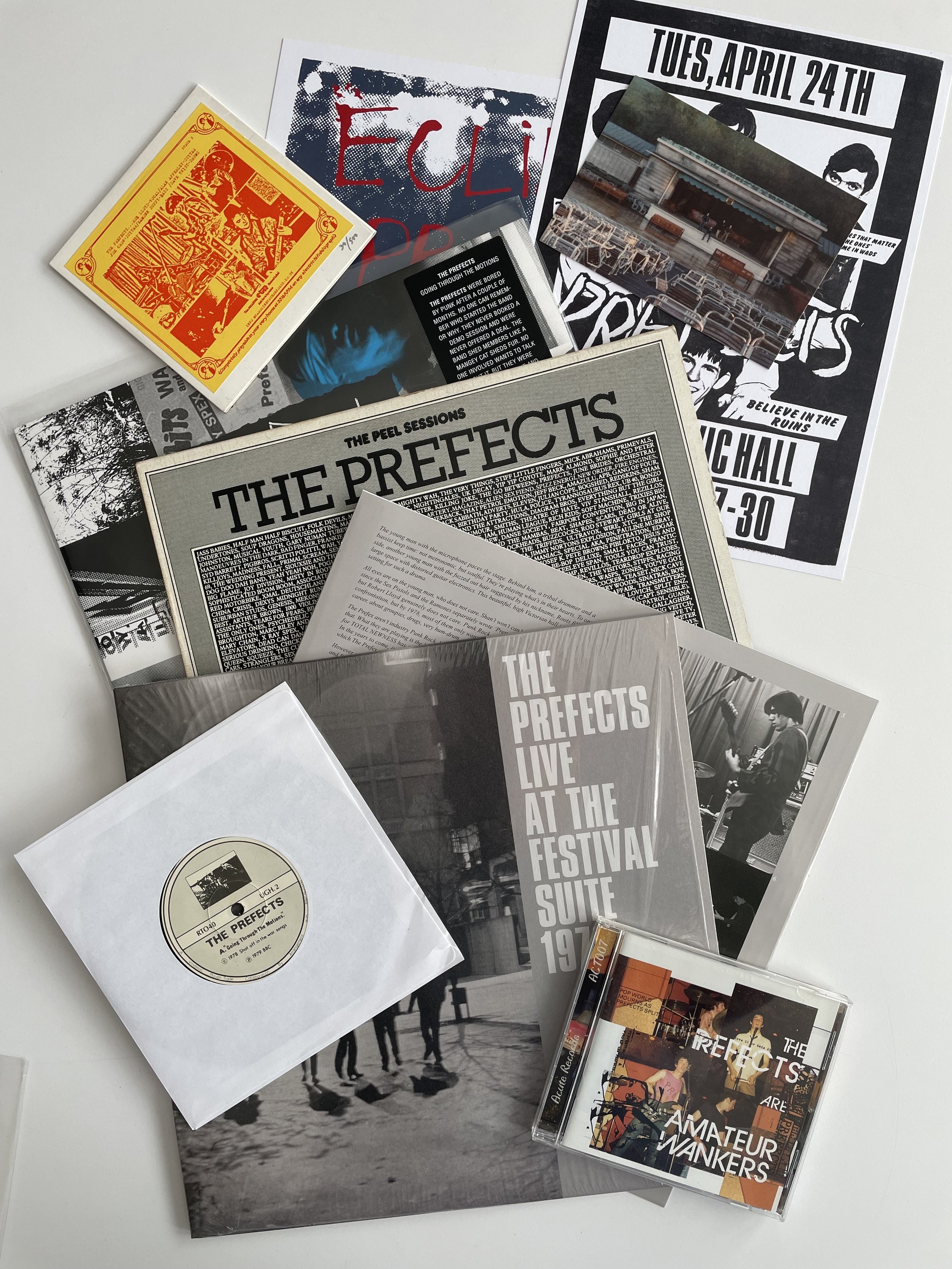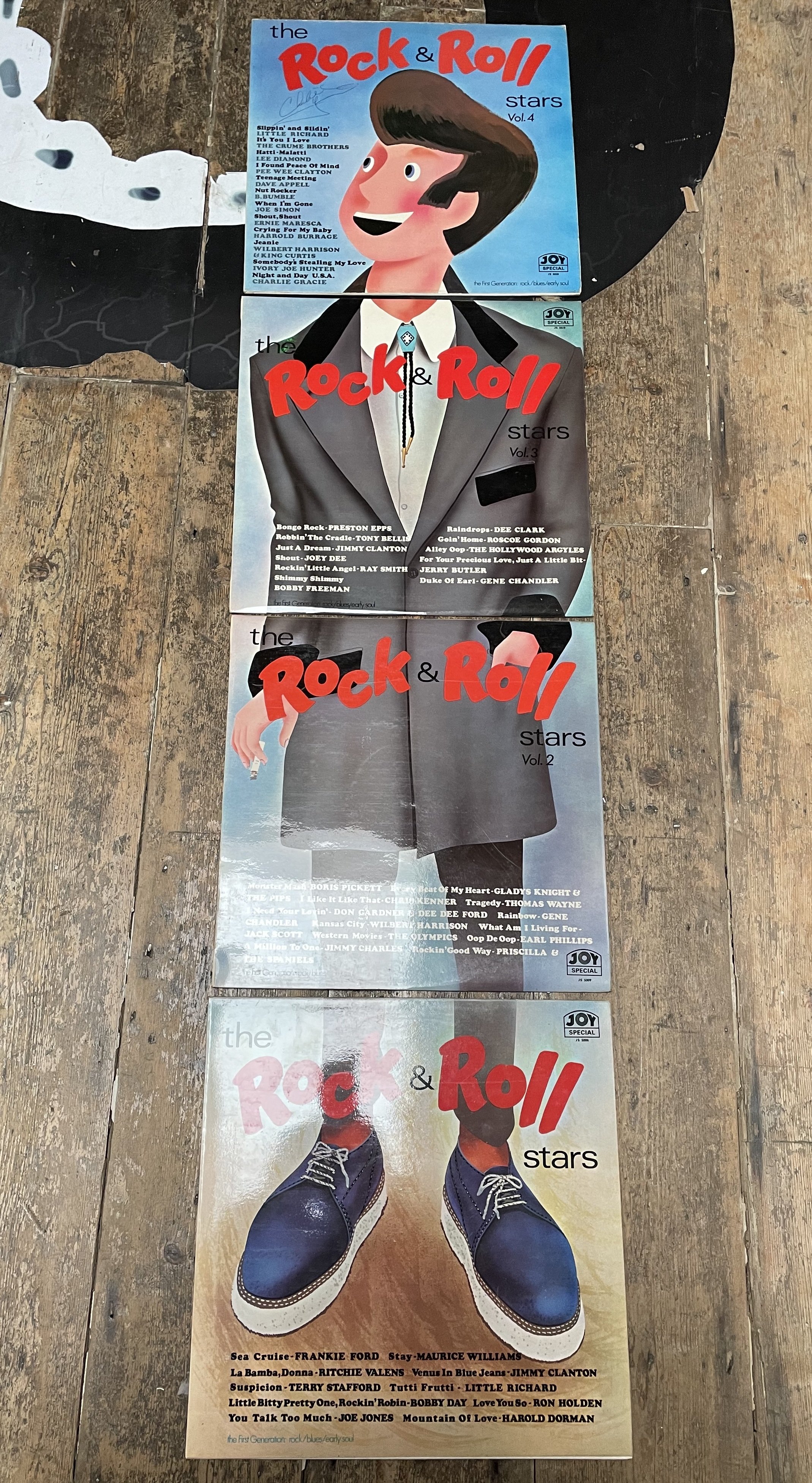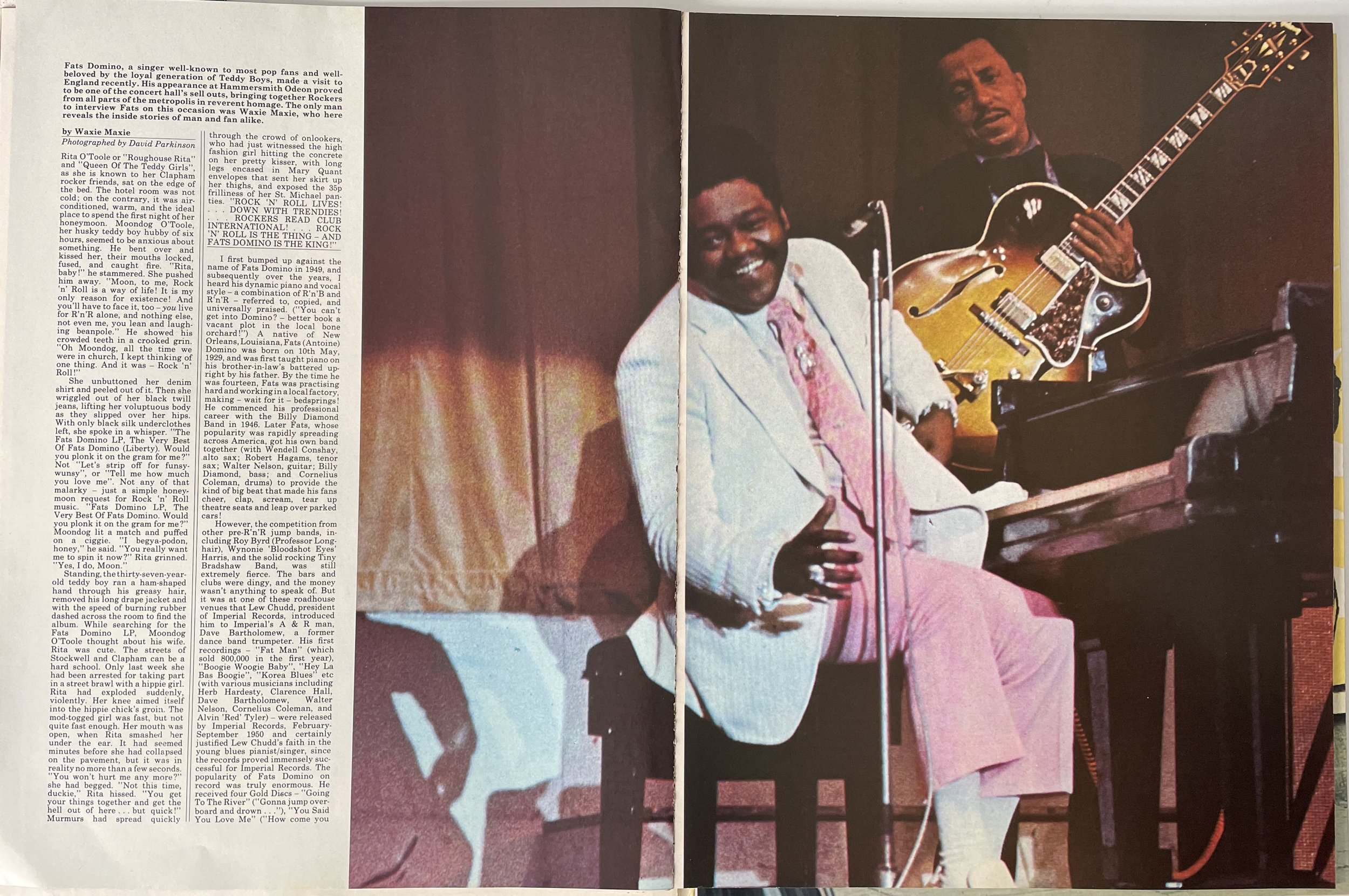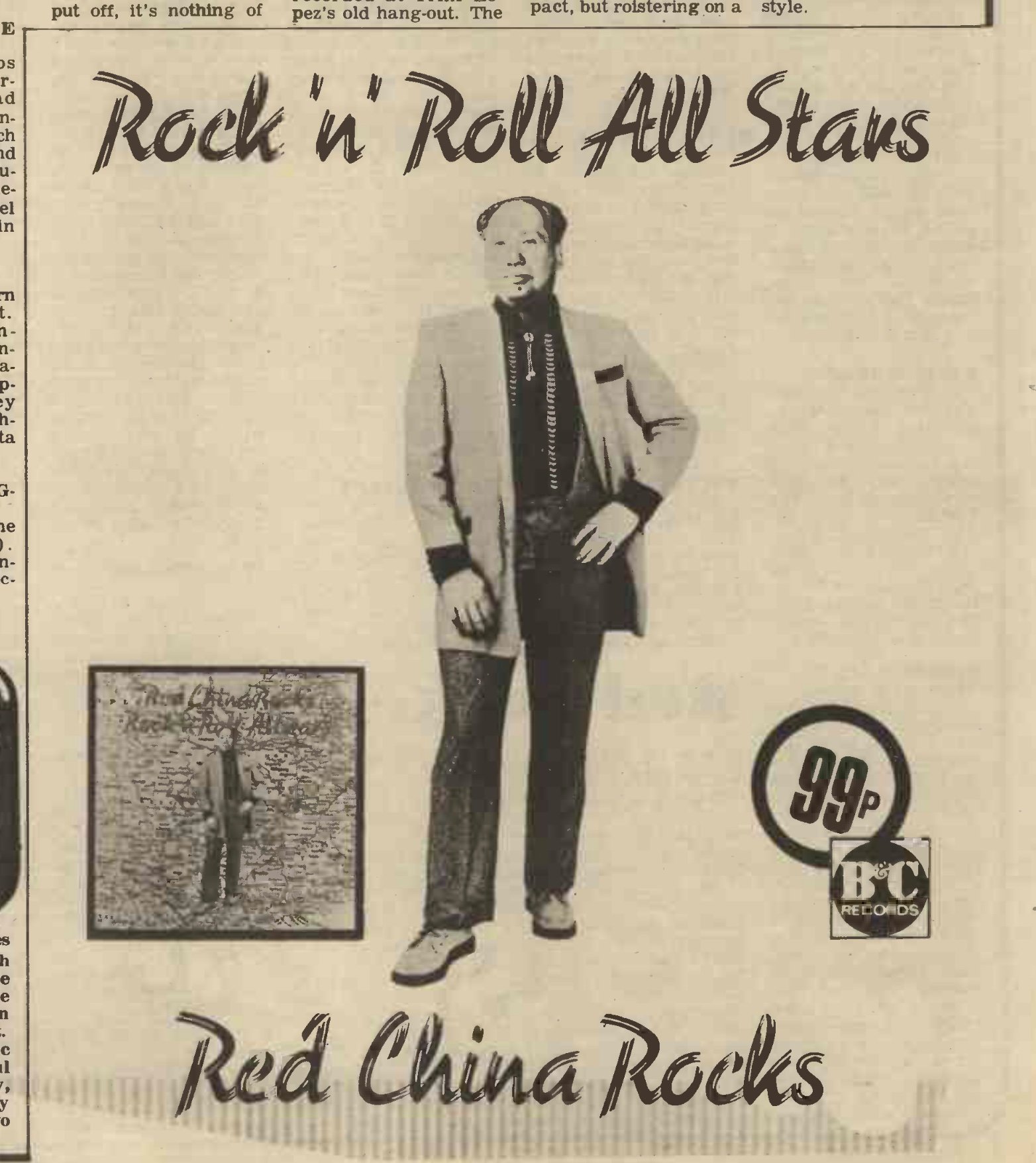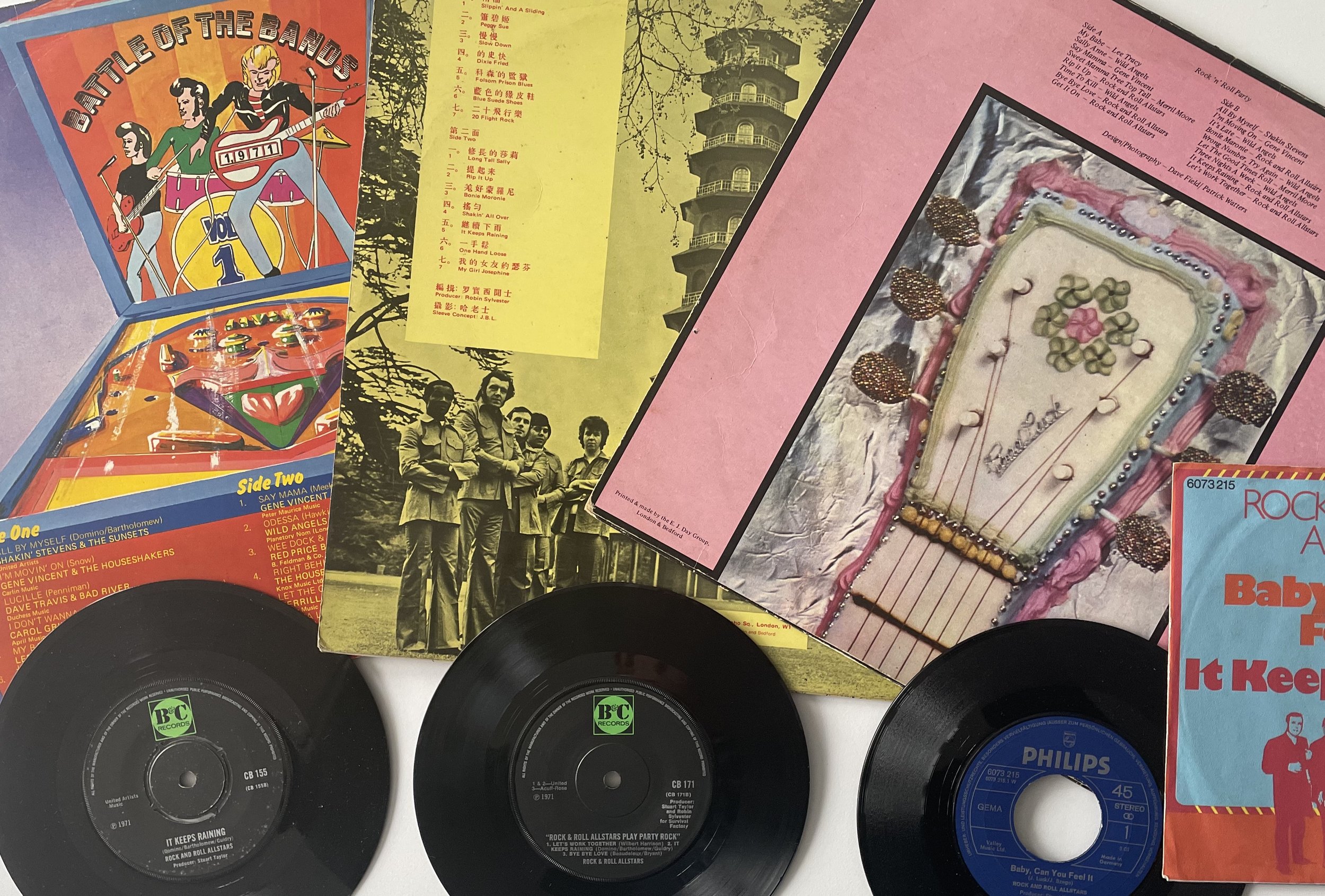Final part of my Lillian Roxon excavation . . . here she sells the New York Dolls
Sunday News (June 4, 1972)
One of the earliest published notices for the Dolls, which prededed their run of 14 Tuesday night engagements at the Mercer Arts Center begining on June 13th (according to From the Archives here)
Sunday News (July 30, 1972)
Lillian is in London to cover Bowie in Aylesbury and Lou and Iggy in King’s Cross, she also takes time out to note that Britain’s top music paper, Melody Maker, have dedicated a full page to the Dolls, unsigned yet trailed as being ‘the best young band ever’. She agrees . . . Here’s Roy Hollingworth’s piece:
Roy Hollingworth Melody Maker (July 22, 1972)
Sunday News (September 3, 1972)
‘thinnner and younger and punkier . . . The manic audience loves them . . .The music is the kind that makes parents crazy. Early push-back-the chairs-and-dance rock-and-roll . . . Everyone and his mother loves the Dolls’.
Sunday News (September 17, 1972)
New Yorks Dolls part of the Rock ‘n’ Rouge clique
Sunday News (September 24, 1972)
David saw the Dolls and he can’t stop talking about them . . .
Sunday News (May 6, 1973)
As with the UK music papers, Lillian plays to the gallery, some of her readers might hate the Dolls but they can’t stop reading about them and letting her know . . . ‘Most of the people you write about are so unimportant in the rock world. For instance, Marc Bolan and David Bowie’.
Sunday News (August 5, 1973)
Lillian’s final despatch . . . Rock n Roll is not dead . . . ‘The New York Dolls are the best, and their album “The New York Dolls”, is the definitively New York sound album. It gets you up and dancing and feeling 14 again’. She was not alone in that sentiment.
Newsday Sunday August 19, 1973. Dave Marsh rounds up the new acts making the scene in New York. Lillian Roxon is pushing the Dynomiters, who I’ve never heard of but then neither have I seen Street Punk listed before (Roxon drops their name in her Australian column, Luger sound familiar (Iggy might produce them) but not New York Central (produced by Lennon!!!). The rest I know about . . . You know, Kiss . .
Rock Scene (March 1974) ran a very similar feature on New York’s up n’ coming that featured much the same line up, but with more pictures. Here’s Street Punk . . . bit of a misnomer if you ask me . . .
NME June 7, 1975. Looking like a bunch of glitter-era hangovers, Lisa Robinson moves the tale of New York’s wannabes toward centre stage: ‘What else is new? Well, the Ramones for one . . .’












